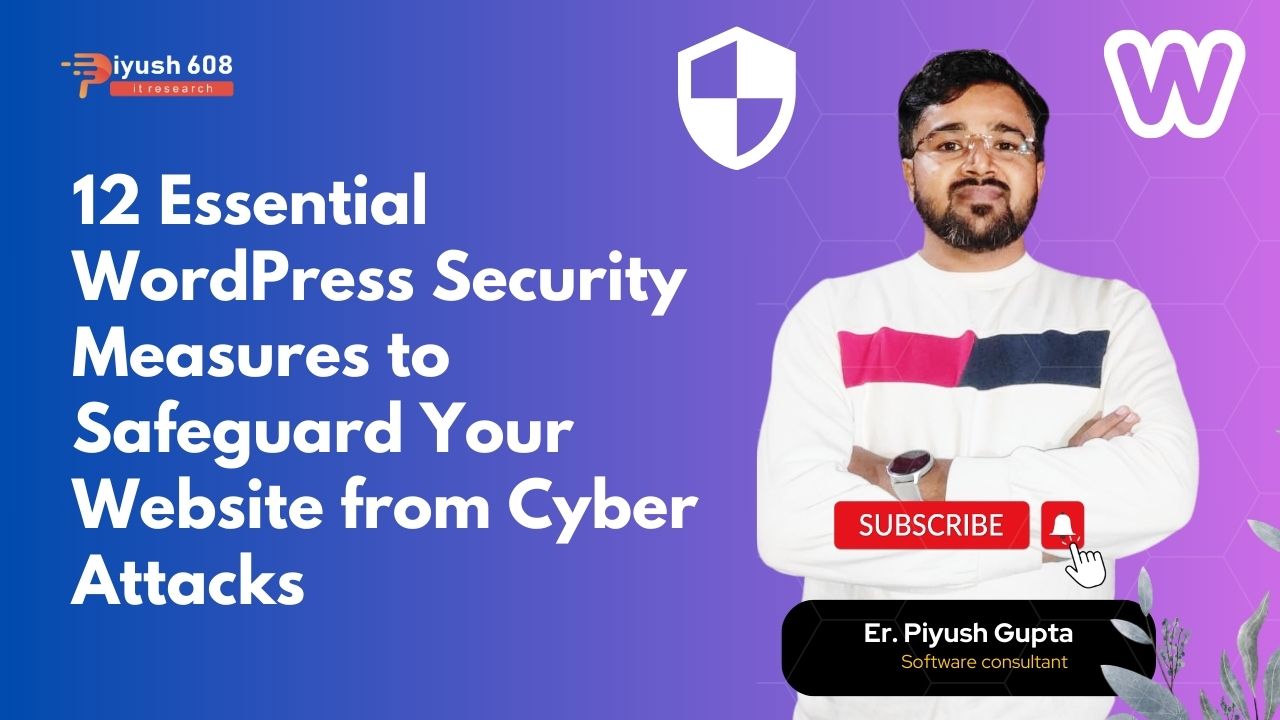
Securing your WordPress website is crucial to protect it from cyber attacks and ensure the safety of your data and users’ information. Here are 12 essential security measures you should implement:
Keep WordPress Updated: Ensure that both WordPress core, themes, and plugins are always up to date. Developers frequently release updates to patch security vulnerabilities.
Use Strong Passwords: Enforce the use of strong, unique passwords for all user accounts on your website, including administrators, editors, and contributors. Consider using a password manager to generate and store complex passwords securely.
Implement Two-Factor Authentication (2FA): Enable two-factor authentication to add an extra layer of security to user logins. This typically involves requiring users to enter a one-time code sent to their mobile device or email, in addition to their password.
Limit Login Attempts: Install a plugin that limits the number of login attempts from a single IP address within a specific timeframe. This helps prevent brute force attacks aimed at guessing login credentials.
Use HTTPS Encryption: Encrypt data transmitted between your website and users’ browsers by installing an SSL/TLS certificate. This ensures that sensitive information, such as login credentials and payment details, is protected from interception by malicious actors.
Implement Web Application Firewall (WAF): Deploy a web application firewall to filter and monitor incoming traffic to your website. A WAF can block malicious requests and provide protection against common security threats, such as SQL injection and cross-site scripting (XSS) attacks.
Regularly Backup Your Website: Set up automated backups of your WordPress website, including both files and databases. Store backups securely offsite, preferably in a location not directly accessible from the internet.
Use Secure Hosting: Choose a reputable web hosting provider that prioritizes security and offers features such as server-level firewalls, malware scanning, and regular software updates. Avoid shared hosting plans that may pose security risks due to neighboring websites.
Disable Directory Listing: Prevent directory listing by adding an index file (e.g., index.html, index.php) to directories without an index file. This prevents unauthorized access to directory contents.
Implement File Permissions: Set appropriate file permissions to restrict access to sensitive files and directories on your server. Limit write permissions to only necessary users and directories.
Monitor File Changes: Monitor your website for unauthorized file changes or suspicious activity. You can use security plugins or server monitoring tools to alert you to any modifications to core files, themes, or plugins.
Stay Informed and Educated: Stay updated on the latest security threats and best practices for WordPress security. Regularly review security blogs, forums, and official WordPress documentation to stay informed about emerging threats and security updates.
By implementing these essential security measures, you can significantly reduce the risk of your WordPress website falling victim to cyber attacks and ensure its long-term security and integrity.


 +91 7905834592
+91 7905834592
 Enquiry Now
Enquiry Now
 piyushmnm@gmail.com
piyushmnm@gmail.com
 piyush.gupta384
piyush.gupta384
Reviews
There are no reviews yet. Be the first one to write one.